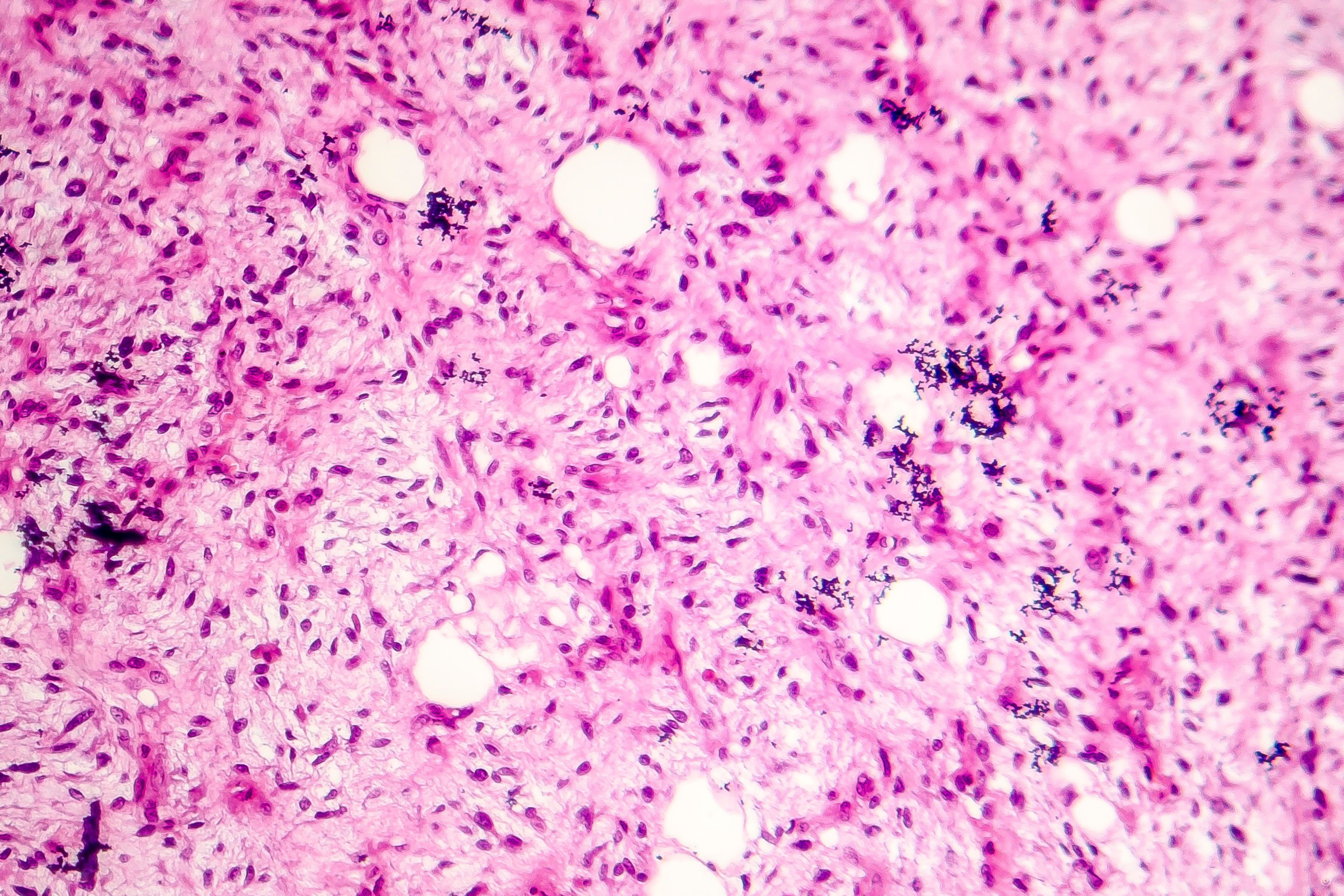INT230-6 With/Without Ipilimumab Prolongs Survival in R/R Metastatic Sarcomas
Treatment with INT230-6 alone led to extended survival among patients with soft tissue sarcoma by nearly 450 days, compared with synthetic controls, and demonstrated a favorable safety profile.
Image Credit: © Dr_Microbe - www.stock.adobe.com

Patients with diverse sarcomas had a favorable median overall survival (mOS) when treated with INT230-6 alone or with ipilimumab (Yervoy), and as a monotherapy or combined, INT230-6 was well-tolerated, according to findings from an ongoing phase 1/2 IT-01 clinical trial (NCT03058289).1
Findings from the study showed that treated with INT230-6 led to promising efficacy and tolerability as monotherapy or in combination with ipilimumab in patients with relapsed, refractory, and metastatic sarcomas.
"The prolonged survival of nearly 450 days compared to what would be expected in such a severe sarcoma patient population is a testament to the strength of our novel drug's potency," stated Lewis H. Bender, president, and chief executive officer of Intensity, in a press release. "Causing significant tumor necrosis, immune infiltrates, uninjected tumor shrinkage and prolonged survival provides strong proof-of-concept evidence of our drug's mechanism of action and underscores the potential of INT230-6 to help metastatic sarcoma patients. As recent data readouts demonstrate, there remains a high unmet need for new therapeutic approaches to treat metastatic cancers in general. With that in mind, we have discussed our next steps with the [United States] Food and Drug Administration, drafted a protocol and look forward to advancing INT230-6 into a phase 3 trial for sarcoma patients.”
INT230-6 is a novel formulation that consists of cisplatin, vinblastine, and a tissue dispersion enhancer. The agent is designed for intratumoral delivery, diffuses into cancer cells, causes apoptosis, and recruits dendritic and T-cells to the tumor. Previously, INT230-6 has demonstrated significant survival prolongation among patients with sarcoma. According to Meyer, INT230-6 continues to be of great interest to oncologists.
In the open-label, phase 1/2 IT-01 study, adult patients with locally advanced, unresectable, or metastatic solid tumors, including sarcoma, were enrolled, and given INT230-6 at a dose set by tumor diameter or volume.
Patients were given INT230-6 via intratumoral delivery once every 2 weeks for up to 5 doses alone or given with ipilimumab at 3 mg/kg once every 3 weeks for 4 doses. Maintenance INT230-6 dosing was given once every 9 weeks.
The primary end point of the study was to assess the preliminary efficacy of INT230-6 alone and in combination with immunotherapy, as measured by OS, and disease control rate (DCR).Secondary end points were to evaluate the overall safety of INT230-6 with or without ipilimumab and pharmacokinetics.
A total of 29 patients with sarcoma were enrolled in the study. Eleven subtypes were included, and were mainly made up of leiomyosarcoma, liposarcoma, pleomorphic, chondrosarcoma, and chordoma. It was determined that the maximum INT230-6 dose at a single visit was 175 mL (87.5 mg of CIS, 17.5 mg VIN) in 1 or more tumors.2
In the INT230-6 alone arm, patients had a median age of 64 years (range, 41.9-76.1), 37% were male, and had a median of 3 prior lines of therapy (0-8) vs 63.2 years (range, 33-82.1), 50% male, and a median of 5 prior lines of therapy (0-9) among those given INT230-6 and ipilimumab.
The mOS for patients given INT230-6 alone (n = 15) was 649 days, and for INT230-6 dosed at a volume/total tumor burden ratio of ≥40%, the mOS was 715 days. In the combination arm, the mOS has not been reached with over 1 year of median follow-up. The OS data reported from the trial compare favorably to a synthetic control which had a mOS of 205 days, based on historical data. Additionally, the hazard ratio of INT230-6 alone for OS to the synthetic control was 0.446 and was 0.270 with ipilimumab (P < .01).
For the all-treated population, which consisted of the patients given at least 1 dose of INT230-6, the DCR was 93% for monotherapy and 86% for the ipilimumab combination. In the combination arm, 1 patient had yet to reach the first time point for stable disease at the time of data cut-off.
Looking at safety, the >20% treatment-related adverse events (TRAEs) observed in evaluable monotherapy patients (n =15) included localized pain (80%), nausea (40%), fatigue (33%), decreased appetite (27%), and vomiting (20%). The >20% TRAEs in evaluable patients given ipilimumab and INT230-6 (n = 14) were fatigue (39%), localized pain (39%), nausea (31%), pruritus (23%), rash (23%), and vomiting. Additionally, grade 3 TRAEs were seen in 20% and 7% of patients in the INT230-6 and combination arms, respectively, and no grade 4 or 5 events were reported in either arm.
Overall, when given alone or in combination with ipilimumab, INT230-6 was well-tolerated in diverse sarcomas, was associated with immune infiltration, and demonstrated favorable mOS vs a synthetic control. Researchers plan to further evaluate the agent in a randomized phase 3 trial in comparison with the standard-of-care treatment in selected sarcoma subtypes with the end point evaluating OS.